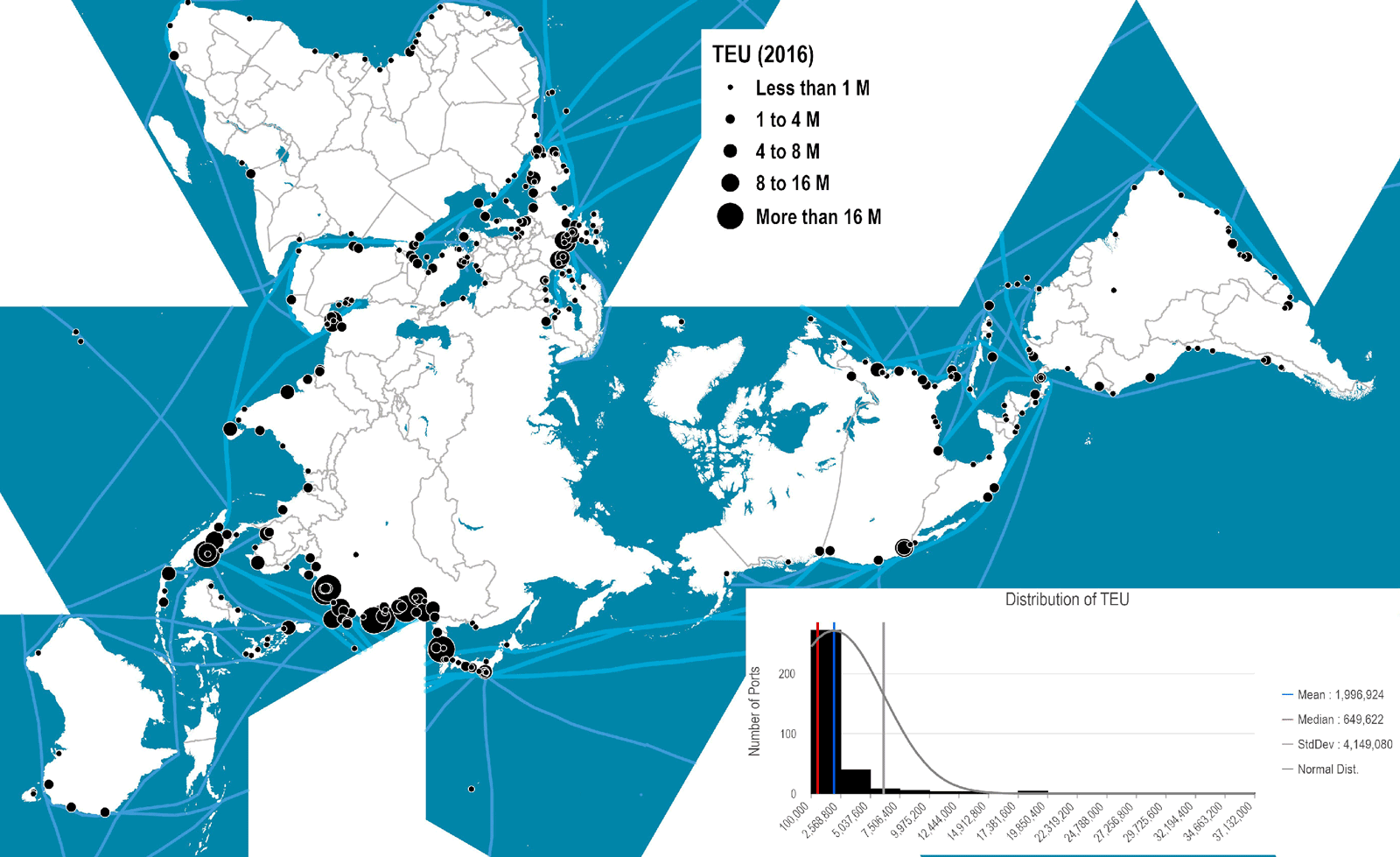The level of container port traffic is reflective of the world's commercial geography and the handling of finished and intermediate goods (figure 7). Commodities, such as grain and lumber, are becoming more prevalent in container shipping but remain a niche market. Before the 1990s, the world's most important ports were North American (e.g. New York) and Western European (e.g. Rotterdam). Globalization, supported by containerization, changed the world's commercial geography with the emergence of new port locations, and reflected changes in the global geography of production, distribution and consumption. This new global geography indicates a high level of traffic concentration around large port facilities, notably Pacific Asian ports along the Tokyo-Singapore corridor. The 25 largest ports accounted for 49.8 per cent of twenty-foot equivalent unit (TEU) traffic, highlighting the vulnerability of global shipping focusing on a limited number of ports. Any significant disruption in the leading 25 container ports will have a ripple effect on other shipping networks through delays in services, which will cascade through other connected ports.
Figure 7: Container port traffic

Source: Based on data from J.P. Rodrigue, Global Container Port Database.
